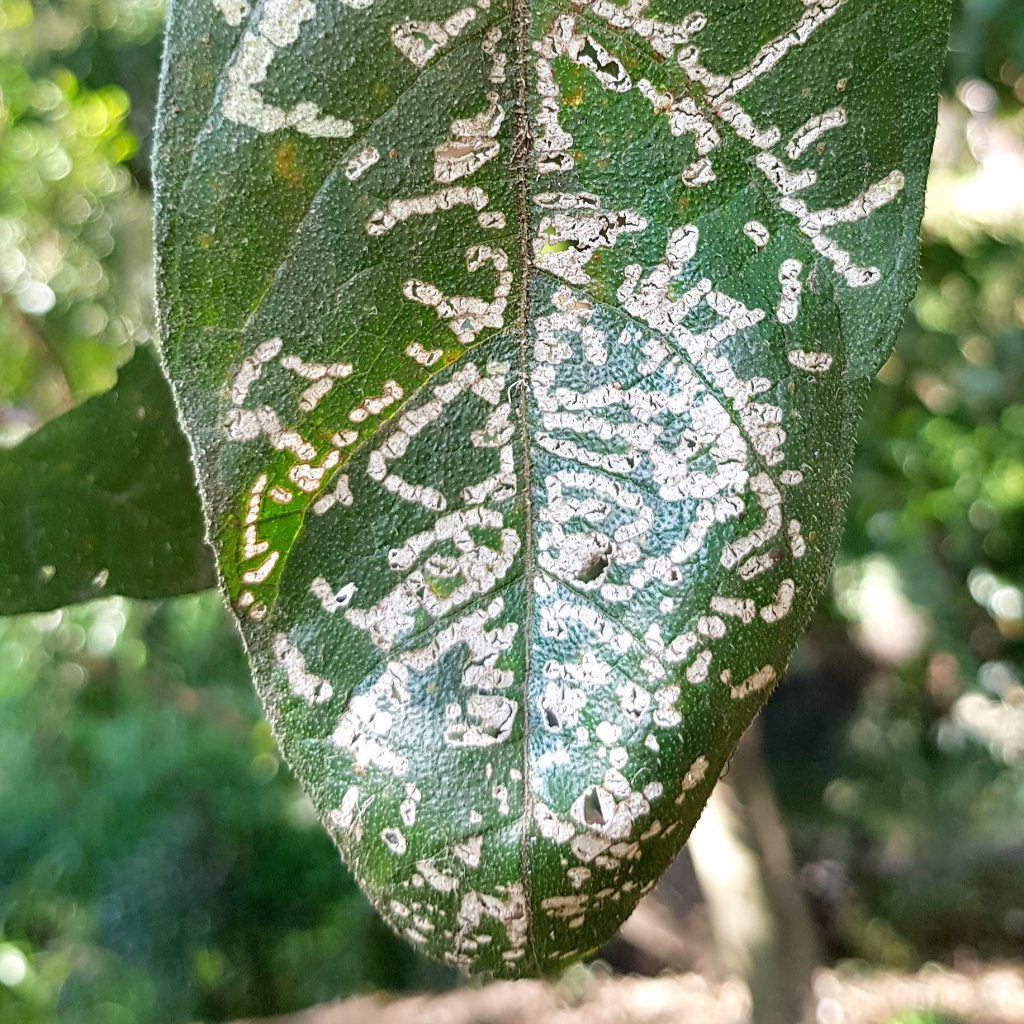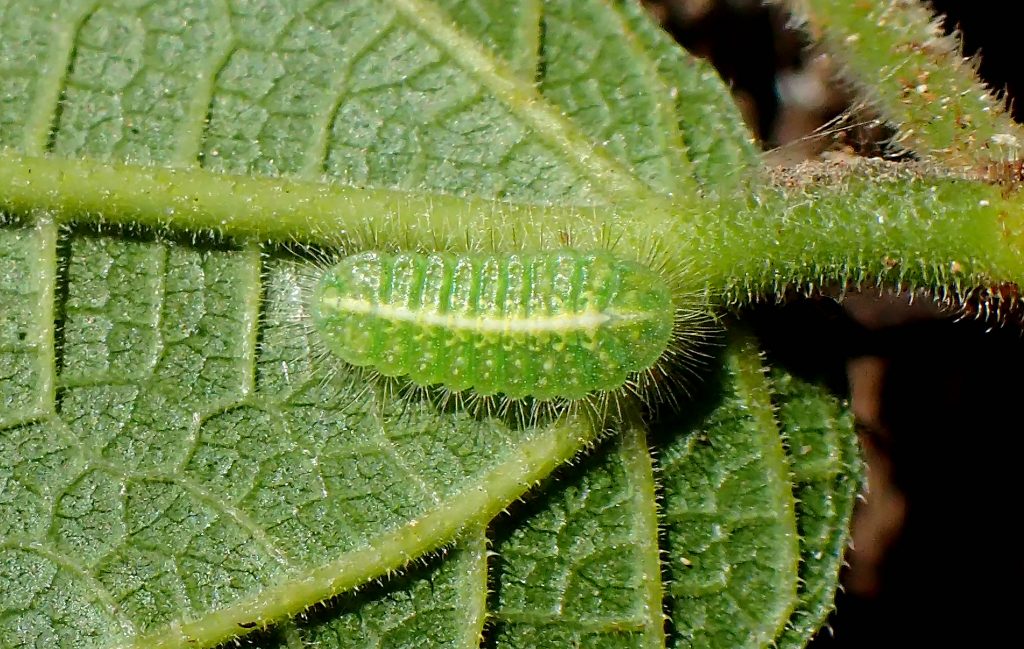 Elusive Butterflies
Elusive Butterflies
The Purple or Common Moonbeam butterfly (Philiris innotata) occurs along most creek margins and in many of the catchments in Brisbane, including in the western suburbs. The adult butterflies are relatively small with a wingspan of just over 20mm and are particularly striking, the wings of the males have a deep purple upperside, and the females pale blue, with the underside of the wings of both sexes a satin silver colour.
Despite their beauty, the adult butterflies are rarely observed as the males spend a good deal of their time perched high on vegetation near creeks, while the females are quite secretive, sometimes observed flying around their host plants. Although the adult butterflies can be difficult to spot, signs of the presence of the butterfly’s larvae on its hostplant Ficus coronata
(Sandpaper Fig) are unmistakable and commonly observed. The butterfly lays its eggs on the undersides of mature leaves of the fig and the developing larvae feed on the leaf’s underside epidermis, and this feeding is obvious on the upper side of the leaf surface. These characteristic trails left by the larvae are a telltale sign that the butterfly is present, without ever seeing the adult butterfly. The larva that remains on the underside of the leaf grows in a series of molts and eventually pupates not far from where it last fed. The larvae are wonderfully camouflaged, green in colour possessing a dorsal stripe which matches closely the underside venation of the leaf.
The Purple Moonbeam has been observed, either as adult butterflies or as larvae, during the recent butterfly sampling in the catchments by Brisbane’s Big Butterfly Count (BBBC). The sampling will continue into 2022. The outcomes of this project have indicated that the revegetation of our catchments with Ficus coronata has greatly assisted the continued viability of this beautiful butterfly species along our waterways.
Trevor Lambkin

Common Moonbeam Philiris innotata larval damage Photo T. Lambkin
Published in:



